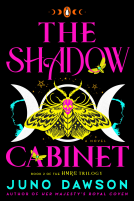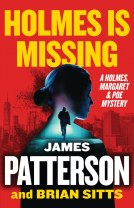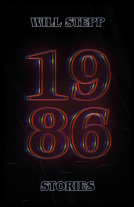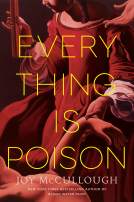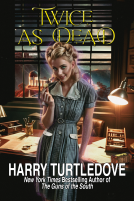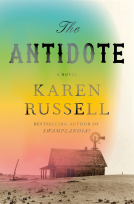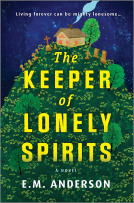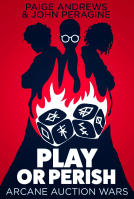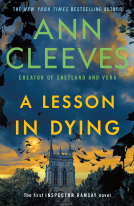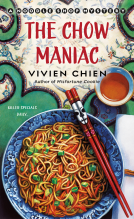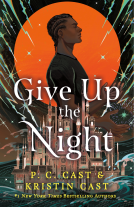
The Mill House Murders
The Classic Japanese Locked Room Mystery
by Yukito Ayatsuji
This title was previously available on NetGalley and is now archived.
Send NetGalley books directly to your Kindle or Kindle app
1
To read on a Kindle or Kindle app, please add kindle@netgalley.com as an approved email address to receive files in your Amazon account. Click here for step-by-step instructions.
2
Also find your Kindle email address within your Amazon account, and enter it here.
Pub Date May 02 2023 | Archive Date Mar 17 2023
Pushkin Press | Pushkin Vertigo
Talking about this book? Use #TheMillHouseMurders #NetGalley. More hashtag tips!
Description
A hugely enjoyable, page-turning classic Japanese mystery with an ingenious conclusion from the author of The Decagon House Murders, translated into English for the first time
Don’t miss this beautifully constructed, highly entertaining and atmospheric murder mystery--its propulsive plot makes for a compelling, page-turning read.
As they do every year, a small group of acquaintances pay a visit to the remote, castle-like Water Mill House, home to the reclusive Fujinuma Kiichi, son of a famous artist, who has lived his life behind a rubber mask ever since a disfiguring car accident.
This year, however, the visit is disrupted by an impossible disappearance, the theft of a painting and a series of baffling murders.
The brilliant Kiyoshi Shimada arrives to investigate. But will he get to the truth, and will you too be able to solve the mystery of the Mill House Murders?
Available Editions
| EDITION | Other Format |
| ISBN | 9781782278337 |
| PRICE | $15.95 (USD) |
| PAGES | 288 |
Featured Reviews
"The Mill House Murders" is a great "locked room mystery" and even with the constraints of a limited number of suspects there is still a great twist ending. I love that these books open with a map of the house and a character list, it really helps when jumping into the story to know who is who before page one. I also really appreciate the well explained ending, all aspects are thought through and taken into account. But my favorite part is the slight tie in to "The Decagon House" with the shared architect! This is a great mystery if you love to solve the puzzle while reading, which I do!
Thank you to NetGalley and Pushkin Vertigo for the opportunity to read this book in advance of the reprint.
 Jan T, Reviewer
Jan T, Reviewer
multicultural, Japan, locked-room-mystery, 1980s, betrayal, creepy, detective, disability, murder, murder-investigation, rural, secrets, storms, surgical-history, suspense, thriller, unexpected-deaths, wheelchair-bound, mask*****
The man in near isolation, a wheelchair, and a face mask to protect him from others.
The artist, the pseudo friends, the odd living arrangements, and the murders.
The incredible plot twists!
The story plods along fairly slowly so that the somewhat dim (me!) can try and try again to figure out the right questions and unearth the right answers. A real challenging puzzle!
Translated by Ho-Ling Wong.
I requested and received a free ebook copy from Pushkin Press/Pushkin Vertigo via NetGalley.
Thank you netgalley for this ARC.
First of all i love the cover with the pink and green the mask because the mask was also involved in the story so the cover is very fitting. Honestly this was a really good murder mystery i got alot of clue vibes from it and i love clue. I will say at times i wanted this to be more dark which it did have dark elements at times i just expected more HOWEVER this book also had alot of characters who seemed the same so it was VERY hard to guess who was the murderer etc which honestly after i finished it im not mad about it. I could not guess who it was so i feel murder mystery fans will love this one. It had alot of eerie elements i loved all the details of the mansion and my favorite part was that it took place during a storm making it even more eerie. I could not put this one down it was a really good murder mystery. I also enjoyed the art elements not knowing who is a thief trying to steal the famous artists work. This book always had me questioning. Overall a good read and a perfect murder mystery!
This book was fun! It is a real old timey detective story which is not usually my scene. It is very atmospheric. I liked being transported to a spooky art collector’s spooky house in rural Japan. I read that this author is interested in reviving traditional Japanese mysteries, and it is a great success. It is set in the 1980s and feels traditional but not moody. Logic puzzles pop up throughout. You’ll like this if you are an Agatha Christie fan.
Thanks NetGalley for the ARC!
The Mill House Murders is a twisty, nonlinear, Japanese murder mystery novel. Fujinuma Kiichi is the son of a talented, fantastical painter who specializes in landscapes. Kiichi locks his fathers great works in his mysterious estate hidden away in the mountains. Every year on the anniversary of the death of his father, Kiichi invites four fans of his father’s work to visit his estate and see the gallery. Last year, strange “incidents” occurs. 1) the housekeeper mysteriously fell from the tower to her death 2) a painting disappeared 3) one of the guests vanished from his room 4) Kiichi’s dear friend Masaki was found in the incinerator—dead.
This year a mysterious man invites himself to the annual gathering, and he is asking questions.
•nonlinear story telling
•slow-burning reveals
•plot twists
•riveting dialogue
I enjoyed this quick novel—admittedly gobbled it up in one night. It was exactly the mystery murder novel I needed to remind myself how enjoyable the genre is. I love the flawed characters and excellent crafting of this web of intrigue. I especially thought it was unique how the present was in 1st person and the past was written in 3rd in order to encompass the many POVs of that mysterious night.
 Alan M, Reviewer
Alan M, Reviewer
This was another fiendish locked room mystery from Yukito Ayatsuji. The chapters alternate between the same day one year apart, the former in 1985 that includes two deaths and a missing painting, the latter in 1986 with the remainder of those who experienced the previous fateful night plus two new characters. Once again the story takes place in an unusual house designed by the architect of Ayatsuji's first novel. This time, the house is owned by a reclusive son of a famous painter, now crippled and disfigured due to a car crash years earlier, along with his young wife, a girl he took in after her parents died. In 1985 he is also hosts a longtime friend who's down on his luck, and allows an annual visit from four fans of his father's art. When the housemaid and one of the guests are killed, and one of the prized paintings vanishes, another of the guests is suspected as the killer; though how he escaped from a locked room situation and during a raging storm is anyone's guess. In 1986, the remaining three art fans have returned, but unexpectedly another man shows up who was a friend of the suspected culprit. As another typhoon rages and the mystery of the past is brought up, will it finally be solved?
Ayatsuji really had a way of writing original takes on classical mystery novels. The story has inventive layers and numerous surprises. I had figured out who the killer was before it was revealed, but how he got away with it and several of the other complexities in the mystery eluded me. As with the previous novel, the final explanation was a bit long-winded and some of it was a bit far fetched, but it was nonetheless very entertaining and a new twist on old tropes.
 Reviewer 266180
Reviewer 266180
Perfectly Perplexing..
From the cast list of characters and the enigmatic map through to puzzle proper this is a locked room, Golden Age style mystery in traditional vein. A small group, on a yearly basis, visit the battalion like, remote Mill House - home to a mysterious and reclusive artist. This year will be different. Riddled with impossible disappearances, thefts and bizarre murders, the talented mind of Kiyoshi Shimada is called in and investigations commence. Atmospheric, menacing and carefully constructed with a deftly drawn cast of characters and a perfectly perplexing and truly baffling puzzle at its’ very heart.
This is not my usual type of read, but this book was enthralling. The plot was clever and well-executed, the characters likeable and chapters easy to digest. Whilst the story development was a little slower than I would usually have liked, I thoroughly enjoyed the winding path it took you down in a very smart way.
Thank you NetGalley for the arc!!
Very entertaining and atmospheric Japanese locked room mystery from the author of and connected to The Decagon House Murders.
If you like Agatha Christie and fair play mysteries that give you a chance to guess what's going on you're well served with this book, hopefully more translations will follow.
 Tosin S, Reviewer
Tosin S, Reviewer
3.75
The first thing I want to highlight is that throughout the book the description was rich, it helped create an atmospheric and eerie setting.
Okay, so the first 25% of the book didn't grip me as much as I wanted the book too. I felt like the flip back from past and present felt a little off. BUT when SHIMADA STEPPED ON THE SCENE, the past and present began to merge and boy oh boy THE REVELATIONS STARTED REVELLING OMG.
LISTEN, that ending, my jaw dropped, SHIMADA weaved so many seemingly irrelevant moments together to paint the picture of the crime.Think of how Detective Benoit Blanc does his big reveal in the knives out films🤌🏿. So many things just clicked together and made me think how the hell did I miss that.
I never saw the ending coming. I really thought I knew who did it but boy I was wrong !
 Reviewer 954661
Reviewer 954661
The mystery and tension in this novel held my attention through the entire book.
The cast of characters, while sometimes hard to differentiate between, provided entertainment and helped move the story along.
The interwoven mysteries were creatively written and gave the reader a lot of consider. It’s possible someone who reads more mysteries than me would’ve figured them out.
I really enjoyed Shimada who guided the other people in the house and the reader towards the conclusion.
This was such an interesting read - I absolutely loved the ending, it was explained so well and was very clever. I loved the setting of the house, it was very atmospheric. There were a few too many characters, which made it a little tough to keep track, but overall it was a very enjoyable read!
The Mill House Murders is a classic closed-door mystery centering around the reclusive son of an iconic painter, who invited a small group to view his father’s work once a year. Flashing back and forth between these visits in 1985 and 1986, a whole series of deaths and disappearances are gradually unraveled, making for some intriguing reading!
I really enjoyed this mystery. I felt like it moved at a nice pace, and left enough clues that I could staaaart to see where it was heading and pick up pieces of the solution, but I definitely did not fully get there!
My only significant complaint was that the back and forth between timelines was more confusing than normal, as it’s essentially flashing between two versions of the same day with the same host of characters for the most part. I also found myself a little annoyed with the level of technical detail surrounding the house itself — there was quite a lot of discussion about and descriptions of the structure and layout of the house, which I thought bogged down some of the sequences unnecessarily and took away from the flow of the book.
Thanks to Pushkin Press, Yukito Ayatsuji, and NetGalley for providing an ARC in exchange for an honest review!
 Marie P, Reviewer
Marie P, Reviewer
Thank you @netgalley for the ARC of The Mill House Murders by Yukito Ayatsuji. This was a great, mysterious who-dunit novel. A group of people are invited to the Mill House. While they are there, a series of murders and a stolen painting takes place. If you like locked-room mysteries, check this one out.
 Emily A, Reviewer
Emily A, Reviewer
Kichii, left severely scarred from a car accident, lives in a secluded manor with just his butler, maid, wife, and his artist father's apprentice. Once a year, he invites a small group to come to the manor and view its prized gem: the only collection of Kichii's famous father's life work. It seems like another normal visit until the unthinkable happens: people start dying, and one man disappears completely. Told in a dual timeline structure, we follow the events of the initial murders and the events of the year after, when the survivors (plus an interested detective) reunite.
This book was fun! It's billed as a Agatha Christie-type novel, and that description is completely accurate. It is an almost entirely plot-driven novel (as opposed to something more character-driven) and it's fun to jump between timelines and follow the detective's investigation while you try to piece together what really happened. I love a good translation and the translation from Japanese is extremely well done.
I was a little puzzled by the character of Kichii's wife and her backstory. She was not really fleshed out or given much time in the narrative to develop as a character of her own.
Overall, you'll like this book if you're an Agatha Christie fan and enjoy a good detective story!
 Reviewer 721108
Reviewer 721108
3.5 stars, rounded to 4.
Fujinuma Kiichi invites 4 people every year the same day to let them view his father's paintings. The rest of the year, he lives in his secluded mill house with his young wife Yurie. Kiichi wears a mask and gloves as a result of horrible injuries suffered many years ago. In the year 1985, during the annual visit, one painting and a guest goes missing, while two people are murdered. Then the next year, on the same day, Kiyoshi Shimada comes to the Mill House along with three guests and tries to investigate the truth behind what happened last year.
I had enjoyed the writer's previous book that has been translated into English, and was very excited when i got approved from Netgalley for this ARC.
I am a huge fan of traditional style mysteries and the Japanese writers who write in this vein.
However, i have to say that i liked The Decagon House Murders more that The Mill House Murders. The biggest issue with the book is that of packing - it is very slow burn and never quite picks pace enough to keep a reader turning the pages. There are a number of characters, but all of them feel rather colourless and none really get a chance to make a mark on the reader's mind.
However, the mystery is still interesting and i also liked it because of the past-present narrative technique. If you are a fan of Japanese/traditional Mysteries, you should give this a try!
On the stormy night of 29th of September, three sinister events subsequently unfolded within the enigmatic Mill House:
1. A woman fell from the tower
2. A man vanished into thin air.
3. A painting was stolen.
Were these three events tied to perform a schematic murder? Or perhaps it was all just an unfortunate misunderstanding?
The Mill House Murders boasts of its atmospheric ambience that lures the readers in, making them feel welcome to the bizarre house. The narration is told in a third POV and first POV alternately, representing the past and the present while slowly uncovering the secrets that had happened inside the house. It is a tale of unfinished vengeance, bittersweet endings, and the philosophy of unfortunate circumstances.
The story also highlighted the importance of paintings in society, on how it seemingly represents every human quality that either makes them good or bad. It is slow-paced since it's a murder mystery (it always takes time to conclude that one's hypothesis is correct), and may bore readers who are impatient to know the ending. The puzzles were quite fun and I was immersed by how it was cleverly written (considering I correctly guessed who or what was the mystery).
Overall, it was pretty good.
Every year, Fujinuma Kiichi hosts a gathering in honor of his father Fujinuma Issei—the acclaimed painter. This year, however, is different. All the usual guests gather at the Mill House to view the collection of Issei’s works. Suddenly, there are multiple dead, someone missing, and a theft—all while a typhoon rages outside. They are all trapped. A year later, they once again gather and this time around a mysterious uninvited guest is there to uncover the truth.
The Mill House Murders is a classic locked-room mystery and the second in the House Murders series by Yukito Ayatsuji. I absolutely love this series. While you do not need to have read The Decagon House Murders to enjoy this book, I highly recommend that you read them both. They are short and fast-paced novels that I read in a day. You will want to gobble them up and get to the solution! The bonus for non-Japanese readers is that you get to learn more about Japanese culture, as well.
Another masterful work from the genius of Yukito Ayatsuji! This was wildly amusing and cleverly plotted. The Mill House Murders is another masterpiece created by the eccentric architect Nakamura Seiji (who we see in The Decagon House Murders as well).
What I love about this is how the past and present murders are juxtaposed. It's so seamless as we read the present and then the past. But what's really interesting is if you just read closely, you'll see how even the translation left clues. It's really a delight to piece together, especially for die-hard mystery fans.
It's fraught with desperation and haunted me as I read chapter after chapter. The ending is truly a sucker-punch that you wouldn't even see coming. It kind of reminded me of the sinister ending of Edgar Allan Poe's The Fall of The House Of Usher. Like his previous work, Yukito Ayatsuji really subverted a lot of the "rules" of the genre and I daresay he really enjoyed himself.
This was delightful to read as it progressed! It terrified me and it also awed me. I'm grateful for the translator Ho-Ling Wong for doing the lord's work and helping us international readers access more gems like this.
 Hillary C, Bookseller
Hillary C, Bookseller
A bit of a drag for the first half, but the ending really packs it in. I'll be thinking about this for awhile, I suspect.
The Mill House Murders is Yukito Ayatsji is an immersive, atmospheric read with a twisted ending. It gave me a nostalgic one-detective show vibe (Hercule Poirot sprang to mind). It's a murder mystery that oscillates between past and present moments and is non-linear. I gobbled this book up in one day and appreciated the references made to Japanese culture. Each character stood out to me with their distinct mannerism and motives, and as the plot progressed, it became increasingly challenging to decipher the ending. The balance between narration (from the simplistic references to weather to the details provided of the mysterious and ominous house) and the dialogue is well crafted. The ending was shocking, one I could have never predicted, and it lingered in my mind even after two days. Reading this book reinforced why murder mysteries are a significant and celebrated genre.
I look forward to reading more of this author's work.
Thank you NetGalley & Pushkin Press, for giving me an ARC. This honest review is left voluntarily.
I’ve recently started reading a lot of Japanese and Korean literature so i was really excited to read this book as the description sounded really intriguing. It didn’t disappoint! A fast paced read, full of mystery and twists and turns, it kept me guessing till the end. At first i wasn’t sure about how the near rat Ive jumped from past to present each chapter but as i got into it this format really worked. I loved it! Will be keeping an eye out for more books by this author!
This has all your classic ingredients: a cut-off location, a small number of suspects and a murder committed by one of them. The narrative flicks, one chapter at a time, between the day of the murder in 1985 and the same day, one year later when Shimada turns up, asking questions about the man who disappeared that night and the presumed murderer.
So what did actually happen that night? Who is more than they seem? Whose facades may crumble? You’ll just have to read it and find out.
I received an advance review copy for free, and I am leaving this review voluntarily.
 Reviewer 785465
Reviewer 785465
Rating : 3,5 out of 5
Blurbs :
Every year, a small group of acquaintances pay a visit to the remote, castle-like Mill House, home to the reclusive Fujinuma Kiichi, son of a famous artist, who has lived his life behind a rubber mask ever since a disfiguring car accident. This year, however, the visit is disrupted by an impossible disappearance, the theft of a painting and a series of baffling murders.
The brilliant Kiyoshi Shimada arrives to investigate. But will he uncover the truth, and will you be able to solve the mystery of the Mill House Murders before he does?
Thoughts :
Not as good as the Decagon House Murders but it's still okay. We are following a new set of characters with obvs Kiyoshi Shimada as the main detective. We are still within the same universe as before and now we come back to one of Nakamura Seiji's houses and there are murders happened here. This book is a very very short read to me. It's not hard to get through this book. It's just not as appealing and good and scandalous as The Decagon House Murders. The culprit and the plot is pretty much predictable. The twist is actually out of nowhere but it's okay, it happened every single time.
Thanks Netgalley for the early copy!
 Bookish D, Reviewer
Bookish D, Reviewer
This book reads like a classical whodunit and is interspersed with things which are wholly oriental (Japanese to be precise) and the closest that the Western world could relate to it is the way the royals especially the British royals project their behavior in public with their stiff upper lip and the way they would behave, unruffled as if nothing has happened even in the face of stinging reality. The oriental style would be about stoicism or rather being more in control of emotions, being extremely polite and emoting very less in public or in company.
In this book the atmosphere is gloomy despite a well described picturesque locale. The pall of the previous years tragedy at the house looms large over the members and the guests all of whom have a link with the incident or are aware of the links and its obvious effects. The fact that the owner of the house is himself a person whose life is steeped in great tragedy and who is also intimidated by a father who was larger than life and who as a classical artist had few peers and who still posthumously enjoyed widespread love; has forced him, Fujinama Kiichi to retreat into a shell and move to a aloof house. He has also hoarded all his father's art from the market into his own secluded gallery where he allows only a select few of his acquaintances once every year and he has along with himself also imprisoned a young girl, his wife which is a mystery of its own.
The story picks at the annual viewing of the art and when 3-4 friends and acquaintances of Kiichi visit the Mill House. We also read about an interloper Shimada who arrives uninvited and asks the owner for permission to visit the house.
A third into the book and the story has warmed up and looks intriguing and interesting and is such that I feel that it should be read at a languid pace maybe facing a fireplace and with a drink in hand. The atmosphere is foreboding but never overwhelming. What is interesting is the cast of characters all of whom seem to have a rabid interest in seeing the paintings which goes beyond just interest and all are equally passionate of a mythical painting by the master which has never been seen by anyone other than Kiichi. The interest is beyond passion and gives out feelings that trickery and murder would not be far off just for the sake of possessing the painting(s).
The book is from the 80's and this one is an English translation but doesn't seem too dated like the classical tales of Agatha Christie, Conan Doyle and others. This is a single house murder mystery that spans a year and involves two incidents involving much of the same set of characters with some of the them falling prey to murder. The story moves effortlessly between the two years - the present and the year previously but continuous back and forth makes the effort jarring and sometimes creates mind games which are not actually present in the book. The Japanese names which may be alien to most readers also forces that trap with remembering and understanding their interactions sometimes tedious. This does not hamper the story but on occasions makes reading slow by forcing the reader to go back and check the timeline. These efforts do not in any way deter in enjoying the story.
The permanently masked owner who is also a person using a wheelchair and host of the Mill House and the almost imprisoned girl who is his wife beg for more history and what is available does not satiate the need for information. They are also red herrings which make the mystery too obvious.
What I loved in this book was the way the previous and present is played up and also the way Shimada as the person who cracks the case is consistently picking up clues and commenting or clamming up about situations, thereby allowing the reader to reach their own conclusions.
What I did not like in the book was the absolute ending which alludes to the supernatural where the rest of the book including the mystery was a murder mystery and a damn good one at that. In hindsight it can be understood that the author probably wanted to give this story an Edgar Allan Poe style end with a hint of the supernatural and which like the cask of amontillado gives the errant villain his comeuppance with horror.
I believe that the book has lost a bit of sting after the translation with no disrespect to the translator but because of my experience with other translated books, some of the original fire is naturally lost because of the nuances of speech and language. This is particularly true for most Asian and Oriental languages where the spoken and written word has variable meanings due to the intonations and the way and who is speaking it.
When reading this book, I think the readers should give an allowance for the above and then they would actually enjoy the story just as I did. I reached the solution earlier than the book, hence I docked a star.
 Reviewer 733432
Reviewer 733432
Another brilliant murder mystery from Ayatsuji.
The mystery unfolds simultaneously in the past and the present, a year apart, making it a very engaging reading experience. Hidden identities, mysterious houses, secret passages, clever gimmicks. Very trope-y as far as murder mysteries go but everything works well together. Looking forward to more of this series!
Thanks to Netgalley and the publishers for the ARC!
 Nicole B, Reviewer
Nicole B, Reviewer
I just can't resist a traditional locked room mystery. This is exactly that, with the added wrinkle of contemporary Japanese architecture (contemporary as of the 1970s, that is; this book takes place in the mid-1980s.) I didn't realize that this was a part of a series of Golden Age mystery tributes featuring unusual residential architecture when I requested it; I'll have to track <i>The Decagon House Murders</i> down. There's something mysterious about this fictional architect, too, even more than the murders in his houses! I liked the two-track narrative switching between the present of 1986 and the original set of murders of 1985 too. The POV adds just the right amount of obscurity.
My only quibble is that the language in this translation is rather spare, and I don't know if it's the translation itself or an artifact of the original. It reminded me of a lot of light novel translations.
 Reviewer 1126350
Reviewer 1126350
Every year, a small group of people make their way to the Mill House—the only way to view the art painted by Fujinuma Kiichi’s father.
But this year, Kiyoshi Shimada arrives unexpectedly—and wants to uncover exactly what happened the year previously.
If you enjoy a well crafted mystery, this book is for you. The plot is impeccably crafted and jumps between the events of two years seamlessly. Each character develops through the course of the book and the tension slowly builds before coming to an intricate yet impactful end.
I enjoyed that the flashback chapters were perfectly interspersed with chapters where questions arose, adding to the overall flow of the narrative.
This is not the first book of this series but can be read independently (although I will absolutely be reading the first book now!)
While translations may get clunky or feel off at times, the translation here was crisp yet evocative. Kudos to the translator for this!
Now that I came to do the review I realize that it is the mangaka of Another and I was surprised. That's what I get for not being able to remember people's names. Too bad, Maggie.
Well, The Mill House Murders has things that I really liked and others that I didn't connect at all.
In the first place, I felt that many times it was tedious or that I couldn't understand what was happening. There are several characters, many different places and although a map and a list of characters are provided (that I even wrote them down with their description) it is a bit complex to go back and forth all the time to see the map. If it were physical, maybe it would be more comfortable.
Everything is a HUGE confusion until the last pages where everything happens very fast and we realize that we were NEVER going to be able to guess what happened. NEVER. Believe me they will never be able to get it out.
The way he has to explain everything that happened, the moments, and I can't say much more because it could spoil something. That was really wonderful and I had to read it several times because there were things that I still didn't understand, and maybe they think that's a bad thing... but no. When I read it again it was like everything became more clear to me and I could see the connections that I OBVIOUSLY couldn't see before.
And while this is the second book in the series, I didn't feel like he didn't understand what was going on. I'm definitely going to go for the first one.
 Reviewer 943104
Reviewer 943104
Thank you to Pushkin Press and NetGalley for providing an ARC in exchange for an honest review.
Yukito Ayatsuji’s The Mill House Murders, with a detailed translation from Ho-Ling Wong, is a murder mystery centred around a collective of characters who figure out the culprit(s) responsible for three distinct crimes: a murder, a disappearance, and a robbery. Ayatsuji’s writing introduces the readers right away to one crime scene before taking on a non-linear narrative approach to describe the happenings at Mill House and the detective work involved to discover the criminals. The story is immersive and the detailed descriptions of the characters, their personalities, and their reasons for being at Mill House are Ayatsuji’s greatest strengths. Overall, this is an interesting take on the detective genre.
This is the second book I’ve read by the author and I’ve totally loved both. I’m so glad I got a chance to read it. I’ve totally fallen in love with the genre and can’t wait to do a deep dive further into the genre and more of this author’s work as well as others. This book kept me guessing the entire time and the twists and turns kept me on my toes for the entire book. I absolutely loved the atmosphere created by the author!
This is the second book I have read by this author (the first being The Decagon House Murders, which I loved!). I am really enjoying translated locked-room mysteries, for some reason. I think I like the way the translated prose reads--it's not overly simplistic, but the language tends to be more literal and less flowery. In terms of the actual mystery, I do think that you'll never...really be able to guess/figure out what is happening, but I still had a good time. I can definitely see where people won't like this, though. Overall, this was a well-crafted, dual-timeline mystery that, though it is the second installment in this series, can be read by itself!
Thank you to Pushkin Press and NetGalley for this ARC in exchange for an honest review!
When I saw that the author of The Decagon House Murders had a new book being translated into English, I had to click "request" right away! The Mill House Murders by Yukito Ayatsuji is unrelated to the previous book - except that they are both entertaining mysteries. The story revolves around Detective Kiyoshi Shimada who arrives at the Water Mill House to investigate a death, a disappearance, and a theft. How are these events related? Hidden secrets and mysteries abound at the castle-like Water Mill House.
Here is a mysterious excerpt from the opening chapter:
"The events of the night had already been enough to feed their fear.
A woman fallen from the tower.
A painting disappeared.
A man vanished under seemingly impossible circumstances.
Could anyone tell where they were heading, where all these events pointed?
The night was drawing to a close. A night that had toyed with them. It was only at dawn that finally, the bizarre culmination of all that had happened in the house would become apparent."
Overall, The Mill House Murders is an excellent new translation of a Japanese mystery. I think that you either like Japanese detective fiction or you don't. It's not for everyone. But as for me, I am a huge fan and will read any of this author's works that are translated into English in the future. One highlight of this book is the great reveal of the locked room mystery. I was definitely surprised by the reveal. If I had to complain about 1 thing, I would say that sometimes, it was difficult to tell which character was which. If you're intrigued by the excerpt above, or if you're a fan of mysteries in general, I highly recommend that you check out this book when it comes out in May!
The Mill House Murders by Yukito Ayatsuji checks all the boxes that define a Locked-room mystery – an isolated setting, a horrible crime or two, and a limited set of people, almost all of whom are suspects – and offers something more.
Fujinuma Kiichi – son of legendary painter Fujinuma Issei – retreated to the Mill House more than a decade ago following the fatal car accident that crippled and disfigured him and killed his best friend Masaki Shingo’s fiancée. Confined to a wheelchair and forced to wear a mask all day, Kiichi leads a reclusive life in the Mill House – powered by its own water wheels that gave it the name – which stands alone in the mountains of Okayama prefecture, accessible only by a single road prone to be cut off in bad weather. In addition to Kiichi, his young and beautiful wife – Yurie – and the staff consisting of a butler and a housekeeper, the secluded house is also home to every single work that Issei had painted, which Kiichi, for undisclosed reasons, had bought back years ago to keep them hidden from the world. Every year on the death anniversary of his father, Kiichi allows four ardent devotees of the master’s work to visit the House and see the paintings. In the year 1985, the strange-but-routine visit turned became a terrible tragedy when the lady housekeeper and Masaki Shingo, who had been staying in the house for a few months at the time, were murdered, and one of the four visitors, a humble Buddhist priest named Furukawa Tsunehito, went missing with a valuable painting. Stormy weather and unrelenting rain had rendered the House inaccessible during the period, preventing the police from doing anything of use about the crimes.
Exactly a year later, three of the original devotees turn up for the yearly ritual, and the stormy weather is not far behind. This time, Kiichi is forced to host one additional guest named Shimada Kiyoshi who has connections that make it impossible for Kiichi to turn him down. Kiyoshi declares that he used to be a close friend of Tsunehito – the absconding murder suspect from the previous year – and expresses his confidence that the priest could not have committed the horrendous crimes and his intention to find out the truth. As the visit proceeds, Kiyoshi interviews all those who were present during the tragedy and tries to reconstruct the events of the fateful occasion. However, before he could make any headway, bewildering things reminiscent of the previous year’s events start to happen, and it seems that more lives will be lost unless the killer – someone among the little group – is identified and stopped.
The Mill House Murders is a winner both as a mystery and a suspense thriller, with solving the past crimes going hand-in-hand with preventing future ones. Each occupant of the Mill House – guest and host – is as peculiar as the House itself, and fully deserve the reader’s attention and curiosity. The narrative switches between the present day’s events and those of a year ago in each chapter, alternately told in first-person by the masked master of the House and in third-person by an omniscient narrator. The author expertly builds the atmosphere with vivid descriptions while enticing the reader to solve the mystery by providing clues swathed in red herrings. The denouement is utterly satisfying and unexpected, though I think I had a hazy, unformed hunch about the killer’s identity at the back of my mind. I will not deny that there were a few incredible coincidences and certain inexplicable actions by a few characters in this novel, but those are inevitable for the genre, I feel. I am happy to have had the opportunity to read this engaging piece of Japanese fiction thanks to the seamless translation by Ho-Ling Wong and the commendable efforts of Pushkin Press in bringing such gems to the world audience, and am looking forward to a lot more!
My gratitude to the publishers and NetGalley for the Digital Review Copy of The Mill House Murders in exchange for my unbiased review.
 BlurbGoes H, Reviewer
BlurbGoes H, Reviewer
[Blurb goes here]
What first attracted me to Yukito Ayatsuji's novels was 'Another' which to this day I keep enjoying to no end.
The Mill House murders brings back the brilliant amateur detective, Kiyoshi Shimada.
It all started last year. The reclusive Fujinuma Kiichi opens the doors of his house once a year to a select group of people. His guest have one thing in common: they want the opportunity to look at Kiichi's paint collection. He's the sole owner of Fujinuma Issei's (his father) paintings. Kiichi is confined to a wheel chair since a car accident that also disfigured his face, reason enough to wear a mask over it. What no one expected was murder. Kiichi's care taker is thrown out of a balcony, a good friend of his is murdered and thrown into an incinerator. One of his visitors disappears, taking the blame of the murders with him.
This years, things look different for Kiichi, though. That is, until an uninvited guest arrives: Kiyoshi Shimada. Kiyoshi is convinced that the police's investigation and results, are completely wrong.
The story progresses in two time lines: one, everything that happened the year before. The other, seen through Kiichi's eyes: the present.
As Shimada digs deeper into the mystery, we'll discover that not all is what it seems in the Mill House.
A locked room mystery in the 'fair-game' style, urging you, the reader, to solve the murder before Shimada does. With unexpected twist and turns, this story is reminiscent of Agatha Christie's style. It might be consider sacrilege to compare both authors, bear with me: Ayatsuji is that good.
Looking for your next great read in the mystery thriller genre? Look no further, this is the one.
Thank you for the advanced copy!
"A hugely enjoyable, page-turning classic Japanese mystery with an ingenious conclusion from the author of The Decagon House Murders, translated into English for the first time.
Don't miss this beautifully constructed, highly entertaining and atmospheric murder mystery - its propulsive plot makes for a compelling, page-turning read.
As they do every year, a small group of acquaintances pay a visit to the remote, castle-like Water Mill House, home to the reclusive Fujinuma Kiichi, son of a famous artist, who has lived his life behind a rubber mask ever since a disfiguring car accident.
This year, however, the visit is disrupted by an impossible disappearance, the theft of a painting and a series of baffling murders.
The brilliant Kiyoshi Shimada arrives to investigate. But will he get to the truth, and will you too be able to solve the mystery of the Mill House Murders?"
Remote castle-like local, art theft, murder, and a rubber mask? That adds up to a thrilling whodunit.
This murder mystery is very creative and really creepy. The Mill House, described in such loving detail, is arguably the main character in the book. The rest of the cast is a fun mixture of victims and suspects and, as always with this author, readers are given all the details to solve the crimes on their own. The plot is crafted like a puzzle and every little piece fits perfectly. Every time a clue is revealed, the whole picture changes, almost like the paintings at the heart of the story. Going back and forth in time, from the incidents a year in the past and the current action could have been distracting, but isn’t, since the author writes the flashbacks in third person and the present in first. All that said, the writing is a little too cerebral. The importance laid on the clues detracts a little from the character development and feels more like doing algebra than reading fiction. That said, the resolution still surprised me, and I loved the story. The storms, the house, the creepy man in a mask and the rest of the little details gave me gooseflesh. I also loved the ending.
I chose to read this book and all opinions in this review are my own and completely unbiased. Thank you, #NetGalley/# Pushkin Vertigo!
 Elodie C, Reviewer
Elodie C, Reviewer
I received a free copy of this book from NetGalley. This review reflects my honest opinion.
As much as I love a good whodunnit, there are so many out there that use the same tropes that after a while they tend to all blur together. In this case, however, there is such a distinctively Japanese style and flow to the narrative that it succeeds beautifully in reframing* these tropes to show them from a new perspective.
(*No pun intended.)
The story is told in two parts, alternating throughout the book. The events told in each part are one year apart exactly; one is told in the third person in past tense, and the other in first person, present tense. They are divided by times, e.g. at 10pm such and such happened last year, and at 10pm such and such happened this year. It's an efficient way to differentiate the timelines, and as the events of the two nights unfold in similar patterns, it ties the narrative together while simultaneously helping the reader (read: my easily confused brain) keep track of what's going on.
The Japanese mores and social customs affect not only the plot, but also the pace of the writing; though it is usually fairly innocuous or even charming, it does sometimes lead to repetitive or circuitous dialogue. It makes sense that some things are lost in translation, so it's a minor issue.
The storyline is engaging, and well resolved. I did find part of it a little obvious, but then again, that's what I mean about whodunnits all looking alike; however, there was still plenty of originality here to satisfy.
 Riley W, Reviewer
Riley W, Reviewer
Every year, a small group of acquaintances pay a visit to the remote, castle-like Mill House, home to the reclusive Fujinuma Kiichi, son of a famous artist, who has lived his life behind a rubber mask ever since a disfiguring car accident. This year, however, the visit is disrupted by an impossible disappearance, the theft of a painting and a series of baffling murders.
The brilliant Kiyoshi Shimada arrives to investigate. But will he uncover the truth, and will you be able to solve the mystery of the Mill House Murders before he does?
An unique story that drew me in and held me captivated. Will recommend this to others.
Set in Japan in both 1985 and 1986, The Mill House Murders kept me happily intrigued and entertained. The original Japanese has been translated into English. Though a passionate Golden Age Mystery fan, my foray into translated works is woefully lacking. It was easy to enjoy the author's engaging (though at times stilted) writing style, characters, setting and plot.
A quirky group of acquaintances clusters annually at the atmospheric home of eccentric Fujinuma Kiichi called Water Mill House. The author immediately transports the reader smack dab into a harrowing murder aftermath scene, really an attention grabber. The staff members are interesting, too, as is Shimada, the investigator. Not only are there murders but also a plethora of secrets, art theft and a disappearance.
For me the house itself is a character...I practically felt the tension and darkness, well written.
If you are contemplating reading this, do not hesitate. It's well worth your time, especially for classic whodunit fans.
My sincere thank you to Pushkin Press and NetGalley for providing me with an early digital copy of this fascinating novel. I look forward to reading more by Yukito Ayatsuji.
 Amy M, Librarian
Amy M, Librarian
Such a great mystery!! It was so enjoyable and I could not put it down. I will recommend this to my mystery book club and see if anyone can figure out who it was before the end!
I simply love this House Murders series. They work as standalone crime novels, yet there is connection between them - at least between #1 and #2. They are spooky, original and old-fashioned detective stories. It almost feels like reading the Japanese version of Agatha Christie, without the clichés. (Sorry!)
Pure entertainment.
Many thanks to NetGalley and Pushkin Press for an ARC.
This stunning follow-up to the Decagon Murders leads us to another strangely constructed house with a locked room murder. Both are stand-alone mysteries, and reprints of Japan's Golden Age, fair play murder mystery books.
An unexplained disappearance, murder, and theft of a master's painting occurred on a dark and stormy night in September of 1985. One year later, the remaining witnesses return to the house, joined by a random stranger who was the friend of the alleged murderer-thief. Once again, a storm returns, another murder occurs, but this time things are different.
Atmospheric, creepy, and un-put-downable, Yukito Ayatsuji does it again. So happy to read these Pushkin Vertigo books!
I can't help being impressed by Yukito Ayatsuji. This is my first time reading his novel and it won't be the last. Everything happened because of the painting The Phantom Cluster, the haunting work of Fujinuma Issei. It was because of this painting that the Mill House had become one of the strange creations of the crazed architect Nakamura Seiji. Fujinuma Kiichi was the only son of Issei and is now the master of the Mill House.
Unfortunately, there had been a tragic accident in the house. A man who is believed to have stolen a painting mysteriously disappeared on that very day. After what happened last year, an unexpected guest, Shimada Kiyoshi who was interested in classic mystery stories started to look into the affair.
A well-designed locked room mystery and Ayatsuji excelled at this puzzle with impressive narration, and I delighted in the ‘who dunnit’ and the ‘how dunnit’ more than the why the culprit did the crime. Def 5 ⭐️
Thanks to @netgalley and publisher for earc. Opinions are my own.
📚
#donereading #themillhousemurders by #yukitoayatsuji #igreads #igbooks #goodreads #bookstagram #emabaca #kindlepaperwhite #malaysiamembaca
I started The Mill House Murders by Yukito Ayatsuji with low expectations after the disappointment that was The Decagon House Murders. But readers, take note - it is possible to rate two books by the same author with one-star and four-stars. This is another one of Ayatsuji’s locked-room mysteries in the style of the Golden Age mysteries. A reclusive, disfigured artist’s son invites the same four guests every year to view the paintings of his father. Last year, the gathering was interrupted by the murder of one guest and the disappearance into thin air of another. This year, strange things start happening again…
Having read Ayatsuji’s previous installment in the “Mansion Murder” series right before reading this one, what struck me most was how much more successfully this book navigates a complex, parallel mystery. The book alternates between flashbacks from the mysterious occurrences 1 year ago and the ongoing action from the present timeline. The narration is clever to trace the action in parallel, with the present timeline composed of both recollection of the past and ongoing action. I found the identity of the murderer (“whodunit”) to be predictable but the reveal “howdunit”) to still involve some elements of surprise, in a way that the ending felt plausible and satisfying. On reread, clues can be found peppered throughout the text, so the book rewards not only the first-time but also the second-time reader.
All in all, I was fond enough of this book to summarize it for my husband, a great lover of Golden Age mysteries, and for him to stop me mid-way through the summary so he could read it himself. If that’s not an endorsement, I don’t know what is. If anything could be improved, some of the characters are somewhat flat - in particular, the child bride reads poorly as someone who is stereotyped and has disappointingly little agency in the book. But the key element of mystery for me is plot and setting - and there is much to recommend here.
Thanks to @pushkin_press for the eARC via @netgalley. This book is out May 2!
The book drew me in immediately when I read about the main characters wearing of a mask, how intriguing, and it being a murder mystery was icing on the cake. Fujinuma Kiichi lives in his secluded mill house with his young wife Yurie. Kiichi wears a mask and gloves as a result of horrible injuries suffered many years ago. It's a locked-room mystery taking place in a castle with an incredible twist that will keep you guessing. I especially thought it was nice how the present was told by the first person persona and the past was told in third person persona. Thanks Netgalley for an advanced copy! #themillhousemurders #netgalley
3.5 stars
This is the second book from the author and it didn’t disappoint, I really like his writing style and the characters in his stories. Although I guessed the twist very early on, I still enjoyed the dialogues and the way the author explains the ending. This is perfect for fans of cozy mysteries and who done it type of books. I wish it had more descriptions of the scenery and the Japan landscape.
Thanks to the publisher for my copy.
 Librarian 781873
Librarian 781873
Super creepy and atmospheric told in two timelines which are a year apart. I found this past/present narrative interesting and not confusing, like I usually do. I found the location intriguing...Ayatsuji does a fairly good job of making you feel that you are right there. This is a very slow burn, almost too slow at times. I struggled to connect with any of the characters which was a bit frustrating. I also found the writing to be a bit disjointed at times.
 Educator 851781
Educator 851781
I really enjoyed this creepy, atmospheric mystery. It has many gothic story elements: an isolated house, a beautiful and innocent young girl, a brooding and wounded lord of the manor and a raging storm outside. The author jumps into the mystery at the very beginning of the book and then slowly winds the tension as he explores the background to the murder. If you like creeping dread and the final reveal in the last 2 or 3 pages then this is for you.
This book is great for fans of mystery. It definitely read as an Agatha Christie novel, so fans of her would love this one. The story was very interesting.
Thank you so much to NetGalley and Yukito Ayatsuji for providing me with a complimentary digital ARC for The Mill House Murders coming out May 2, 2023. The honest opinions expressed in this review are my own.
Every year, a small group of people pay a visit to the remote, castle-like Water Mill House. It’s the home to the solitary Fujinuma Kiichi, son of a famous artist, who hides behind a rubber mask ever since a disfiguring car accident.
However, things are different this year. The visit is interrupted by an odd disappearance, a stolen painting and a series of strange murders.
The intelligent Kiyoshi Shimada arrives to investigate. But will he get to the truth, and will you too be able to solve the mystery of the Mill House Murders?
I read the first book The Decagon House Murders and loved it. I love Japanese novels and I was excited this one was translated into English. I loved this book! Setting it in the 1980s was perfect. I love the time period. I love the whole detective procedural process of this book. The writing is very straightforward. It reminded me of a few Japanese detective dramas I’ve seen. The ending seemed a little open. Perhaps there will be more books.
I would recommend this to anyone who enjoys Japanese murder mysteries!
I was a big fan of the Decagon and enjoyed this story almost as much. I didn't find it as dynamic as the previous title however it was thoroughly enjoyable and keeps you guessing right to the end!
This is one mystery novel that scores very high just for its unique setting. It is a combination of a locked room murder mystery and good old detective skills at play. Set in Japan, the human behaviour plays a central role in both the instigation and solving of the crime. I haven’t read the first book in this series but intrigued to pick it up soon. I like how the author connects the first book to this one also simultaneously keeping the thread to possible future books open. With an engaging plot, this is a nuanced atmospheric mystery novel that is a must read.
This is right up there with Agatha Christie! There were twists and turns, and while I was able to figure a couple things out, I was still left stunned at the end! I've had a hit and miss relationship with translated Japanese books, but this one was a mega hit! It was just such a quick and fun read that i couldn't wait to finish! I can't wait to dip my toes in more of this author's books, because I think his writing style and the translation really work for me!
At the beginning, there were so many characters and the two timelines. This and the habit of sometimes calling them by their family name and sometimes calling them by their individual names made it difficult to follow the first part of the book. I think it would have been easier if I had a physical copy of the book, so I could flip back and forth between pages as needed. As I kept reading, I was able to better figure out who was who.
As to the mystery, I was able to figure out part of it early on. However, there were other details that were not even on my radar. So I liked that surprise. There was also a twist as to the 'bad guy' that I didn't see coming. I thought that was very clever as well.
I was also intrigued by the way that gender played out in the book. There were moments that felt like traditional Western gender roles were being fulfilled and other times when they felt like they were being subverted. Considering this is a Japanese novel, the fact that there was a difference was not surprising. However the way that difference played out was more enjoyable than I expected.
I have heard about people talk reverently about Japanese murder mysteries and I'm glad I was finally able to pick this one up. I will definitely be looking for more like this.
The second novel in Ayatsuji’s classic locked room murder mystery series, The Millhouse Murders introduces a small group of acquaintances that meet annually at the home of a masked recluse, his young wife, and the exclusive collection of his late father’s art - The Millhouse.
“An impossible disappearance, the theft of a painting, and a baffling series of murders” take place during a stormy night on one of these annual visits. The following year, those that survived the night find themselves at The Millhouse again with unexpected guest Kiyoshi Shimada.
I love a good, claustrophobic murder mystery story! The setting is creepy, the murders are macabre, and there is just a general sense throughout the whole novel that things are not as they seem. I did have a good idea what happened early in the story, but it didn't lessen my enjoyment of it and reading on to see how Ayatsuji would (or would not) bring our characters to the final conclusions of the novel.
The first novel in this series, The Decagon House Murders, has been on my radar for a long while, and now I'm even more excited to read it. I will note that I do wish I'd read The Decagon House Murders first as Shimada is introduced there and there were a few comments alluding to it in The Millhouse Murders.
I hope we get more of this series in the future. Thank you to NetGalley and Pushkin Vertigo for the opportunity to read and review this book. All opinions are my own.
Wow, I was really surprised by this book! I had never read a book translated from Japanese and was nervous about understanding the cultural significance of things but this story was well written and easy to follow! My only problem was the e-book couldn’t change text size and it was super tiny, so I had to zoom in on every page. But it was a great read!
Allow me to lay out my reading process for this one. I knew it was a murder-mystery and wanted to see if I could guess what was going on. I got a cardboard block, some string, some tacks, and some sticky notes. Id read some, go to my board, and try to figure it out. It was a fun, great experience. I had such a great time. It was well-written, though there were moments that felt clunky or off - which I feel is relatively normal seeing as it is translated. It's never bad. If you want to feel close to characters, this one may not be for you. It's more like trying to solve what's going on, solving a riddle, rather than something where you genuinely care about the characters.
I loved The Decagon House Murders so was happy when I got The Mill House Murders from NetGalley. Again we have an atmospheric and intricate locked room/house murder mystery with a small, set group of potential killers. Again I correctly guessed the who and the why pretty much from the start but again I couldn’t quite figure out the how. Highly recommend this for mystery fans especially if you’re looking for something a bit unique and original.
**Thanks to NetGalley and the publisher for the e-arc I received 8n exchange for my honest review**
Thank you to Netgalley and the publisher for this ARC in exchange for an honest review.
I liked this second book in the "House Murders series" more than the first one. It was creepy with some horror vibes. I could not put it down. I hope that the next book will be translated ASAP.
 Reviewer 356409
Reviewer 356409
I am always looking to expand my knowledge of new to me authors, so when I picked up this book I had no clue that it was the second in a series. I feel though that it was easy enough to read as a stand alone, but I will be going back to read the first book. I’m a fan of creepy, eerie mysteries and this was up that alley. It had slightly different pacing than what I’m used to and I liked it. The premise is along the lines of a locked room murder mystery, which to me adds tension right off the bat. It’s a fairly solid mystery novel that I enjoyed.
Please be advised I received an Advance Reader Copy of this novel for free in exchange for an honest review from NetGalley.
At first, I thought it was a bit "meh" when I started reading...but then it got good & I really enjoyed it. I very much would recommend to my fellow reading friends.
 Reviewer 354493
Reviewer 354493
Can’t go past a murder mystery, and these honkaku classics have become something I’ve looked forward to with each release! This is another atmospheric story that engages with time in its telling, with an ending that stayed on my mind for some days!
This felt like something different so I had to give it a try. I did really enjoy it, and it is superb if you love bone chilling, creepy vibes - the weather, the setting, the eerie feeling of doom, the haunting artwork, the strange architecture of the isolated house - ⭐️⭐️⭐️⭐️⭐️ for creepiness.
•
It was also fun in an Agatha Christie-esque way, as the ending was completely unexpected and surprising and left me totally shocked. The unveiling of the truth behind the horrific events in the house was always delivered in a Christie character manner, with an unexpected, amateur sleuth swooping in unexpectedly and putting the pieces together, largely through group discussion and casual conversation.
•
My biggest complaint is the characters were very surface level, and I did not feel like I ever really grasped who was who, with the exception of two standouts. There was not a lot of development there.
•
In summary, this story centers around an annual trip to the Mill House - a castle like, isolated bizarre architectural masterpiece - during which a small group of acquaintances are hosted by the home’s reclusive and mysterious owner, who is infamous for his post-accident deformities, and wears a white mask at all times to cover his scarred and mutilated face.
•
The main draw of the home is the fact that it houses the artwork of one of the most iconic and famed artists in the world, the deceased father of their host. As they father together on the anniversary of tragic events that occurred in the house the precious year, an unexpected guest and a string of murders turn an artistic homage into a bloodbath.
The Mill House Murders is an enthralling locked room mystery that will keep you engrossed until the very last page. Penned by celebrated Honkaku mystery writer, Yukito Ayatsuji (not to be confused with the character in Bungo Stray Dogs), the story is masterfully crafted, with seamless transitions between past and present events, and all the classic elements of a gripping murder mystery.
Set in a secluded mill house, the plot revolves around Fujinuma Kiichi, a recluse with a disfigured face, and his wife, Yurie, who live off the grid. Their sole visitor, Masaki Shingo, met a tragic end on a fateful and ominous night a year ago. The housekeeper, Negishi Fumie, also lost her life, and a valuable painting was stolen, leading to Furukawa Tsunehito being accused of the crime. Furukawa had received an annual invitation to the Mill House as one of the exclusive guests. One year later, Shimada Kiyoshi arrives uninvited at the Mill House, determined to unravel the mystery once and for all.
Overall, the book is a delightful read that can be enjoyed as a standalone novel, but for maximum enjoyment, I would recommend reading The Decagon House Murders beforehand. Ayatsuji's writing is both captivating and vivid, and the intricate details of the plot make for a truly immersive and thrilling reading experience.
This was my first Japanese locked room mystery and it surely won’t be my last. The Mill House Murders is a murder mystery that follows a group on their annual visit to the Water Mill House, a remote home in the middle of nowhere, owned by Fujinuma Kiichi. This visit does not go as planned, a disappearance followed by an art theft and murders shocks both guests and tenants alike. Kiyoshi Shimada investigates to try to get to the truth while the group’s secrets became uncovered, one by one.
Perhaps this one was too smart for me, which I love because I could not figure out who committed the crimes. I love when that happens. A slow burn, this book was a perfect one to get me out of my reading slump. I really enjoyed the mystery and I can’t wait to read other books by Yukito Ayatsuji.
It’s tough to review without giving anything away, but I enjoyed this book from start to finish! If you’re a fan of Agatha Christie novels, give this one a try! It’s full of nostalgic murder mystery and the setting is both eerie and interesting.
 Grey 9, Reviewer
Grey 9, Reviewer
My first ever Japanese mystery and I'm glad it's this one.
We start this story off high but also the way such tales usually do; with a murder. The stakes never fall of note and maintains it's rhythm which is very important for mysteries.
Hats off to the author for crafting such a well thought out mystery and I hope to read more soon.
Thanks to netgalley for the advanced copy
 Reviewer 1048278
Reviewer 1048278
I FOUND THIS BOOK TO BE VERY INTERESTING. I ENJOYED THAT IT WAS A LOCKED ROOM MYSTERY. IT WAS CREEPY AND FAST-PACED FOR ME.
 Librarian 466388
Librarian 466388
Thank you to Netgalley and the publisher for providing this advance copy in exchange for honest feedback. A fun locked room mystery for fans of Agatha Christie.
I love a good locked room mystery and this was amazing. It was so gripping right from the very first chapter it had my attention. Highly recommend this book.
This was definitely darker than the first book (The Decagon House), but it was fascinating still. I found this book easier to read than the other, and I liked the shifting perspectives and timelines from past to present.
While I actually preferred the Decagon House Murders, this was still an enjoyable read. Perfect for anyone who likes classic mysteries but wants to branch out a bit.
Another Japanese title in translation from Pushkin Vertigo. Twisty and suspenseful, this one is a classic locked-room mystery and is a bit more straight ahead than the atmospheric Devil's Flute Murders.
 Karin C, Reviewer
Karin C, Reviewer
As they do every year, a small group of acquaintances pay a visit to the remote, castle-like Water Mill House, home to the reclusive Fujinuma Kiichi, son of a famous artist, who has lived his life behind a rubber mask ever since a disfiguring car accident. This year, however, the visit is disrupted by an impossible disappearance, the theft of a painting and a series of baffling murders. This is a classic locked room mystery with some interesting twists and turns. I was hooked from the start and literally could not put it down until the end. If you are a fn of locked room murders then you don't want to miss this one.
 Jacqueline B, Reviewer
Jacqueline B, Reviewer
I am a big fan of the Japanese Crime Fiction genre now. Another locked room mystery in the vein of Agatha Christie.
I really enjoyed this book. While similar to book 1, The Decagon House, only in it being a locked room mystery; The Mill House Murders had a more macabre and atmospheric setting to it. An ancient home, a violent storm, and a murder. The eeriness of the fact that these same events occurred exactly one year previously heightens the anxiety. Kiyoshi Shimada, from book 1 is back to solve both cases, which turns into a twisty ride.
I was intrigued, and pleasantly surprised by the twist. I thought this was a fantastic sequel and can't wait to see what Shimada solves next.
I received an ARC os this book from Neutrally and Pushkin Vertigo
Thank you to NetGalley for this ARC in exchange for an honest review. A Japanese locked-room mystery? Sign me up! The perfect mystery to get you through the weekend.
I initially wasn't aware that The Mill House Murders was a part of a series, but I enjoyed it anyway. It was gripping and suspensful, and I have since purchased the other books in the series and thoroughly enjoyed them.
Another locked room mystery from Yukito Ayatsuji and it's just as wonderful as his other work, Decagon House Murders. It helps that I'm a giant fan for this kind of story and mystery. There's something diabolical about the amount of planning that goes into a locked room mystery and figuring out the murder. Needless to say, I had a lot of fun.
 Reviewer 142279
Reviewer 142279
The cover lured me in to this locked room mystery novel and I didn't get out until late hours because I could not stop reading. I really loved that it's Japanese. It gives another dimension to the book.
Thank you Pushkin Vertigo for providing this book for review consideration via NetGalley. All opinions are my own.
 Reviewer 1126393
Reviewer 1126393
Another twisty whodunnit from Yukito Ayatsuji! This book kept me on my toes. Just when you think you’ve figured it out (for the 5, 6, 7th time) you’ll be left with another surprise or clue!
I also liked that while this book isn’t necessarily a sequel to the Decagon House Murders many elements and a few characters exist in the same world. It’s also referenced in The Mill House Murders.
Readers who liked this book also liked:
James Patterson; Brian Sitts
General Fiction (Adult), Mystery & Thrillers, Women's Fiction
Patti Callahan Henry
General Fiction (Adult), Historical Fiction, Women's Fiction
